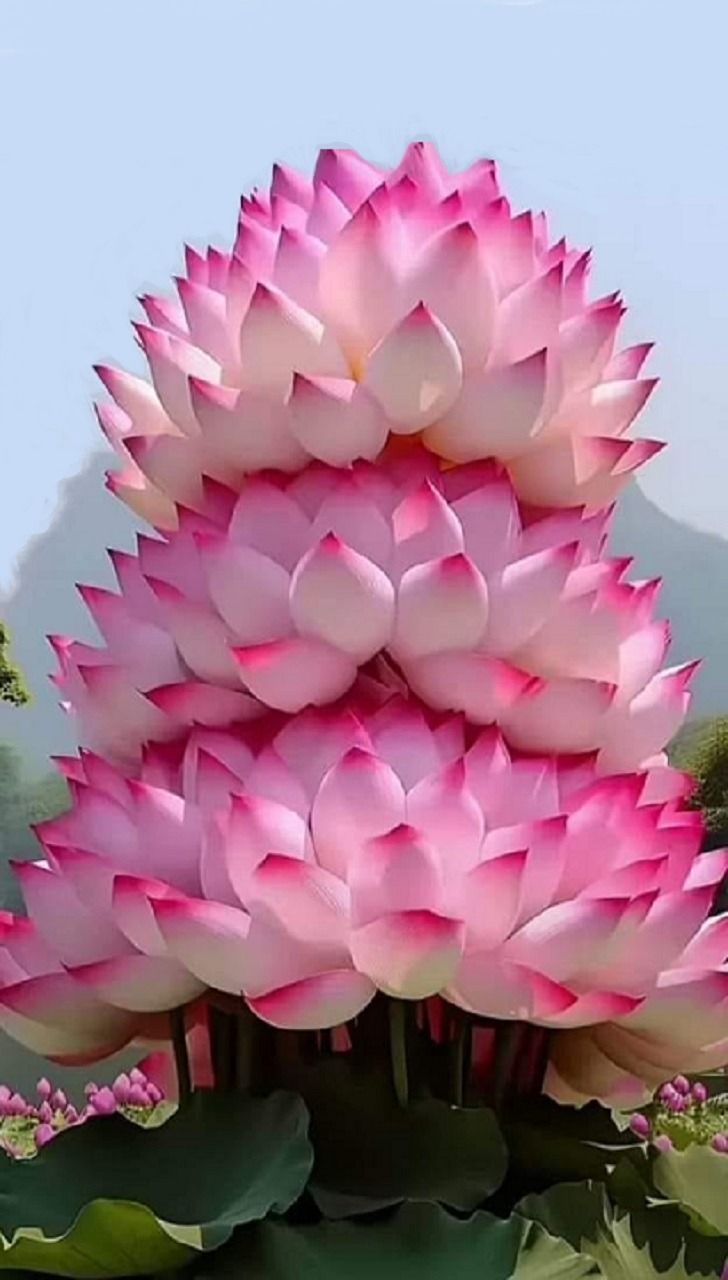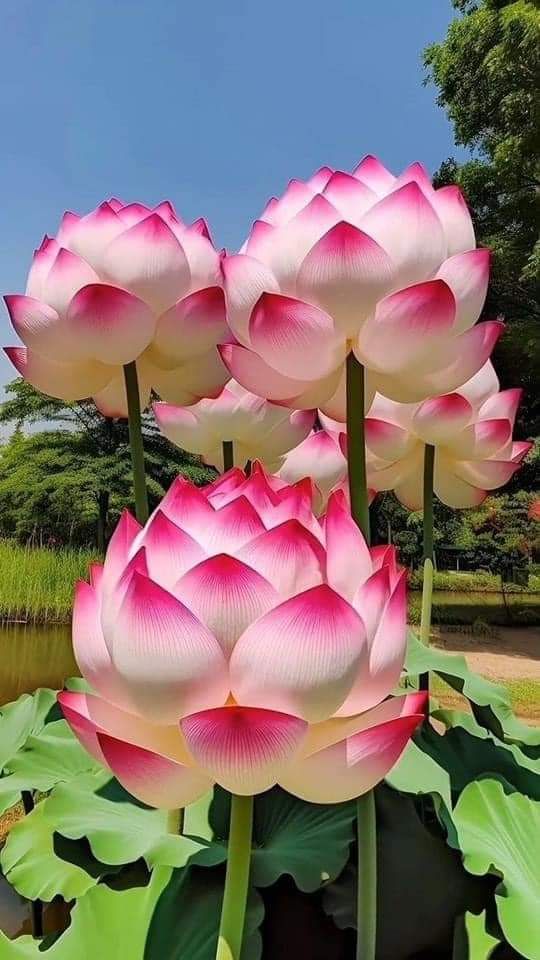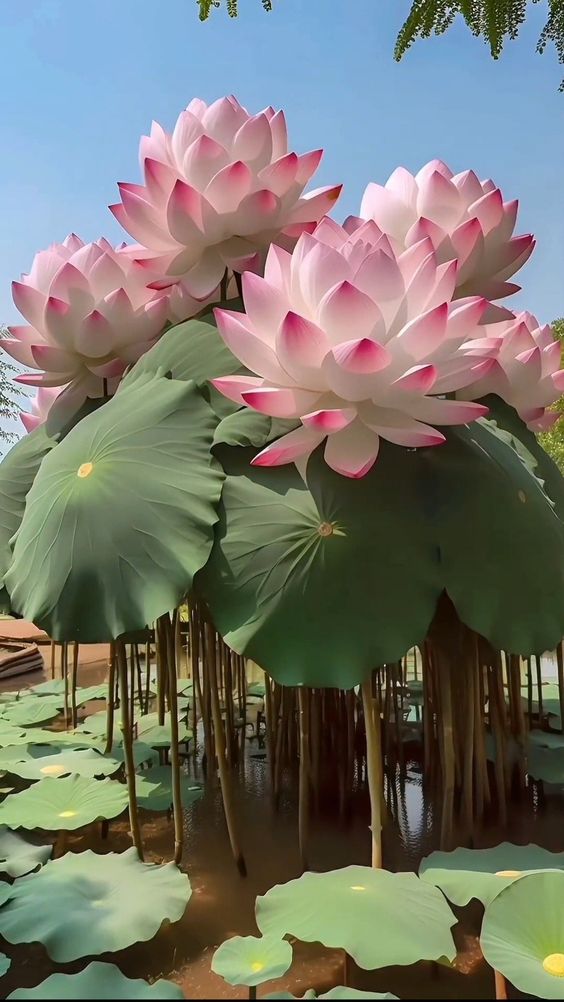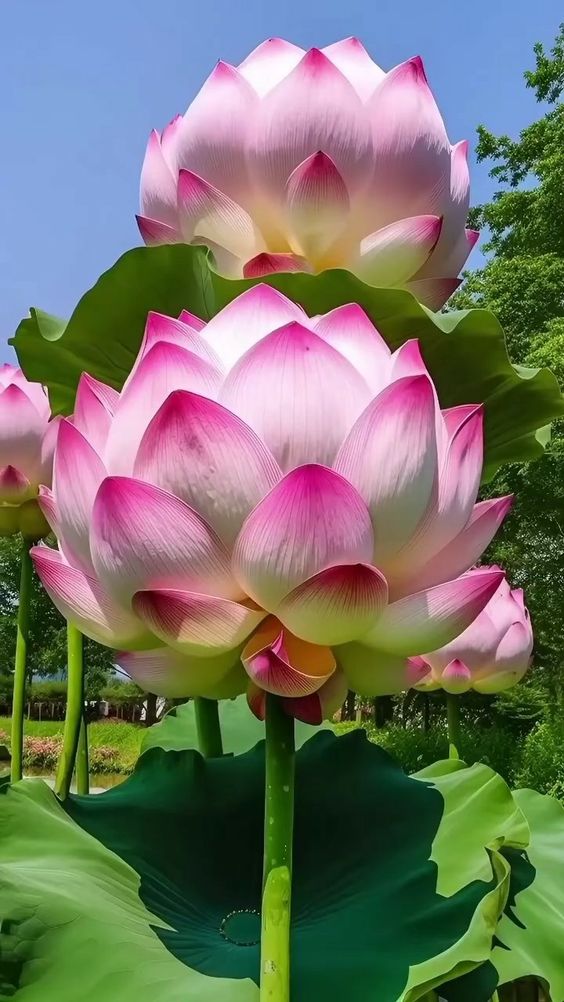In the tranquil waters of ponds and lakes across Asia, the lotus flower, known as the “Queen of Aquatic Plants,” emerges as a symbol of purity, enlightenment, and divine beauty. With its roots firmly anchored in the mud, the lotus rises through the water to bloom, untainted by its muddy surroundings, exemplifying resilience and spiritual transcendence.

The lotus, scientifically known as Nelumbo nucifera, is revered not only for its aesthetic allure but also for its profound cultural and spiritual significance. In many Eastern cultures, particularly in Buddhism and Hinduism, the lotus is a sacred symbol representing purity of the body, speech, and mind. Its emergence from the murky depths into a pristine bloom mirrors the journey of enlightenment and the triumph of purity over adversity.
One of the most captivating aspects of the lotus is its impeccable beauty. Delicate petals unfold to reveal a stunning symphony of colors, ranging from pure white to shades of pink, red, and even blue. The symmetry and grace of the lotus blossom have inspired artists, poets, and spiritual seekers for centuries, serving as a muse for expressions of beauty and transcendence.

The lotus is not merely a passive beauty; it is a dynamic and resilient plant. Its ability to thrive in adverse conditions, with roots submerged in muddy waters, makes it a symbol of perseverance and triumph over challenges. The lotus teaches us that even in the murkiest of circumstances, one can rise above and unfold into a thing of beauty.
Beyond its cultural and symbolic significance, the lotus holds practical value in various Asian cuisines and traditional medicine. Lotus seeds, pods, and roots are utilized in culinary dishes, while the plant’s extracts are believed to possess medicinal properties. The versatility of the lotus extends from the spiritual to the practical, further enhancing its revered status.

In artistic expressions, the lotus is a recurrent motif in paintings, sculptures, and religious iconography. Whether depicted as a solitary bloom, a cluster of blossoms, or integrated into larger narratives, the lotus remains a timeless muse for artists seeking to convey themes of purity, enlightenment, and spiritual awakening.




In conclusion, the lotus flower stands as a living testament to the intertwining of natural beauty, cultural significance, and spiritual symbolism. Its elegance, resilience, and profound meaning have elevated it beyond a mere botanical wonder to a revered icon across diverse cultures. As the lotus gracefully unfolds its petals in serene waters, it invites us to reflect on our own journey of growth, purity, and transcendence in the ever-changing waters of life.





